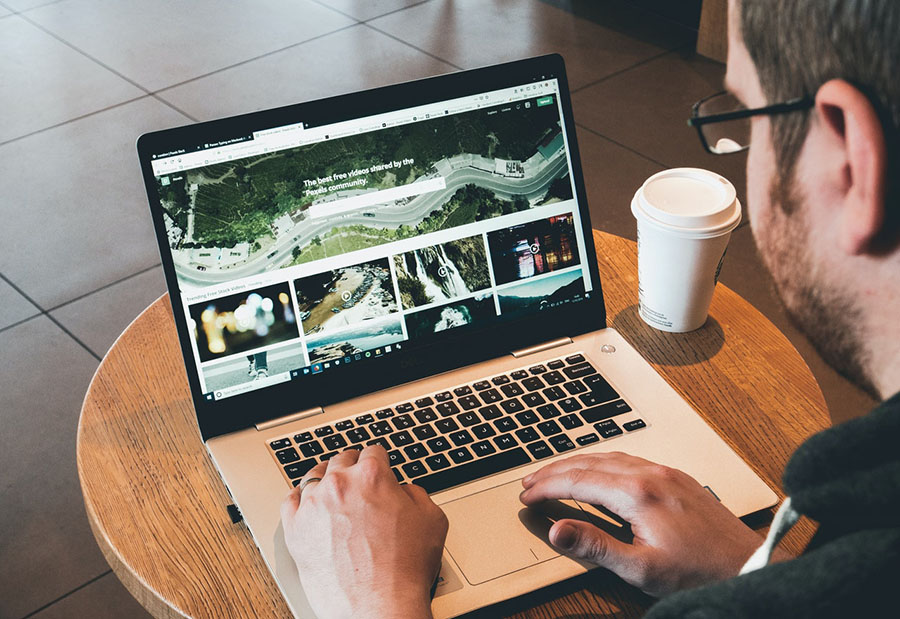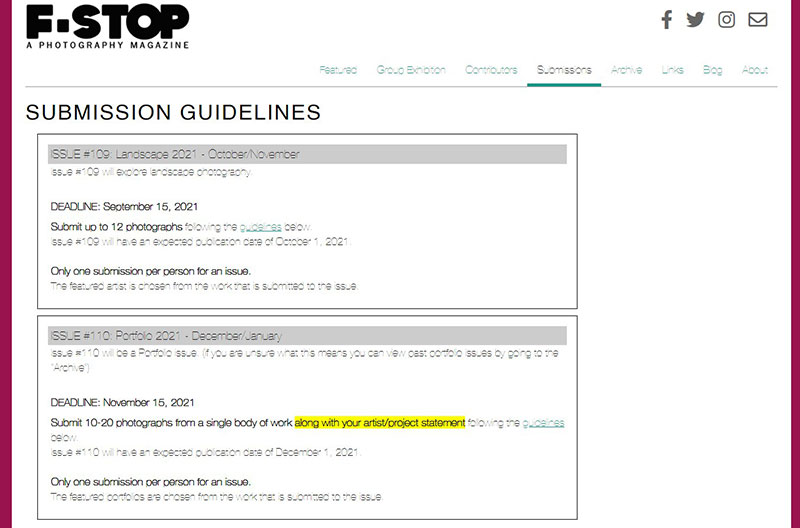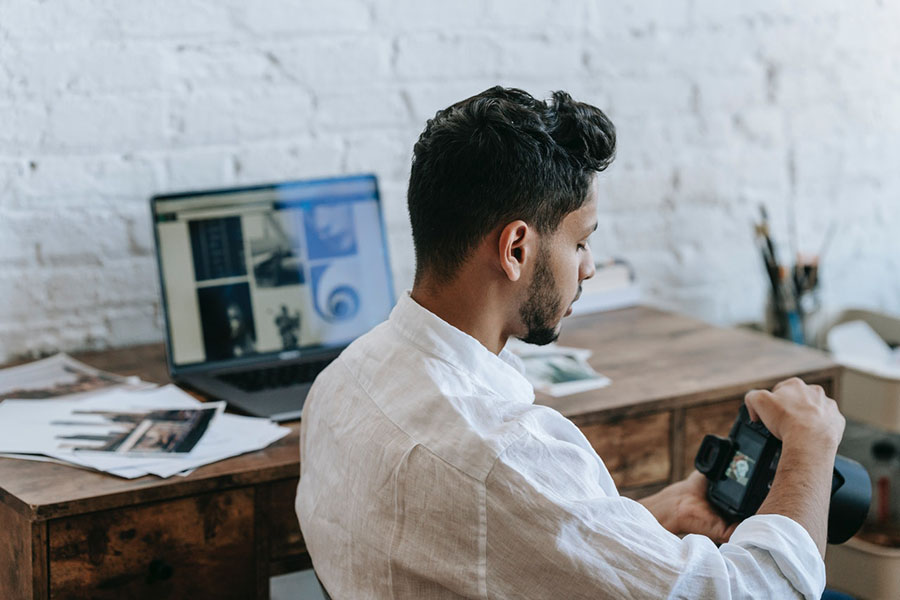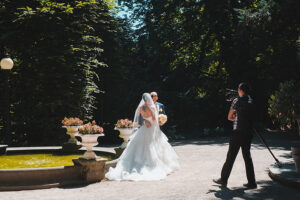For many photographers, having a photo published in a magazine is the ultimate goal. Sadly, the process of submitting photos to magazines is not straightforward.
Also, publishers tend to hire photographers that they already know. There is a risk that comes with hiring an unknown photographer.
So how can photographers get recognized and get their photos featured in a magazine? Submitting photos to magazines involves a process.
Photographers need to choose which pictures to submit. They need to find the right magazine to send them to. Also, they need to understand submission guidelines. If you don't know how to send a photo to a magazine, check out a dedicated file transfer service that will allow you to send large files and folders easily.
This article will analyze the steps to get work published in a magazine. It will also talk about magazines that accept photography submissions.
The following steps will be discussed:
- Stick to a purpose
- Build a portfolio
- Prepare
- Submit your best work
- Create a photo submissions template
- Avoid sending the same pictures to different magazines
- Use social networking
- Choose the right magazine
- Know the submission guidelines
Think About the Purpose

It is important to think about the reason behind getting a picture featured in a magazine. Do you want a full-time magazine photography job? Do you want one photo to be featured and nothing more? Do you want to move into a new genre of publication photography? Do you want to get your work published to attract the attention of buyers?
Answering these questions will provide the basis for a concrete plan of how to proceed. For example, if photographers want a full-time magazine photography job, they need the proper equipment. They would also need to invest in a studio, lighting, and other staging equipment.
No matter what the goal is, stick to your purpose when submitting photos to be published. Create demo photos that show what you are passionate about. Showcase what kind of equipment you use.
It is also essential to convey that you will cooperate with the magazine publishers. Present images in your portfolio that show you have the style that publishers are looking for.
On your application, express that you work well with others. Make sure they know you have the magazine's interests at heart.
Build a Portfolio
Magazines are more likely to publish your work if they see your talent. That talent needs to go beyond just your photo submissions; it needs to extend to all your photos.
Magazines receive numerous photography submissions every day. When they want to hire someone, they look at more than the submission. They also look into the photographer's other work. So photographers need to build up a portfolio of exceptional photos.
Editors and art directors will probably look at a photographer's social media profiles to see if they are a good fit for the magazine. Consider building them up if your portfolio or social media profiles do not accurately reflect your style and skill.
Make sure social media profiles represent your style, preferences, talents, and interests. Choose personal projects that will build them up. Do projects and photoshoots on subjects that you are passionate about. Make sure everything is above board by getting signed releases from all models.
Building up a portfolio allows photographers to experiment with fresh photography ideas. Try new things with your equipment. Work on other creative ideas. Experiment with unfamiliar subject matters.
Preparation is Key
Would you go to a job interview without preparing? Submitting photos is similar to going to a job interview. If a photographer sends out random photos without any forethought or consideration, they will most likely fail.
Before submitting pictures, a photographer needs to be prepared. First, research the magazine's interests, subjects, and style. Then submit photos that fit the style and theme of the publication.
Work your way up. Start by aiming for an achievable (lower distribution) publication and then work towards higher goals. Start with a local publication. Then aim for a regional one, then a national magazine, and finally an international one. Use previous jobs as leverage to prove that your work is publishable.
Work proactively to get your work published. In general, this means contacting publications directly. As you contact publications managers, do not forget about blogs. Being published on an influential blog will raise your profile's value. Think of websites like Canon, Vanguard, Sony, and other popular photography brands.
Photographers need to make a good impression when they contact publications managers. Both their photos and their words need to be professional and impressive. If you are contacting them via email, work on improving your writing skills.
Learn how to craft a professional email with a pleasant attitude behind the words. Do not copy and paste the email. Do not use emojis or abbreviations.
Submit Your Best Work
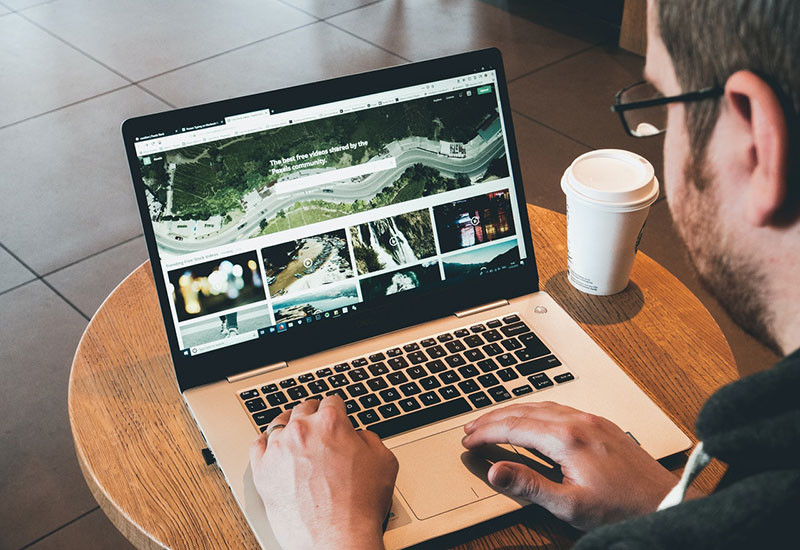
Photography magazines look for the best work. They are under pressure to impress viewers, increase subscriptions, and generate more revenue. So they analyze each photo with a highly critical eye.
There are also hundreds of other photographers that compete to be published. Magazines receive thousands of photo submissions every day. If a photographer's work is going to stand out from the competition, it needs to be the best of the best. Make your work offer something exceptional.
Be honest with yourself about your photos. Look at them with a critical eye. Are they the best? While the definition of a good photo is subjective, the technical elements are beyond debate. If photos have an obvious flaw, they will not make the cut.
Flaws include:
- soft focus
- motion blur
- excessive grain
- distracting background elements
If photographers feel like they need better photos, they need to build up their portfolio. As mentioned above, they can do personal projects and photoshoots to build up their portfolio and collect magazine-worthy images.
Sometimes publications will put out a call for certain types of images. Make sure to stay informed of any calls or competitions from magazine producers. Jump at the chance to be a part of it. It is an opportunity to catch the attention of the editor or art director.
Create a Submission Template
After building up a good portfolio, photographers can create a submission template. A submission template is a tool that speeds up the submission process. It also prevents photographers from forgetting to provide information vital for successful submissions.
Here is some information that should be on a submission template:
- Full name
- Business name
- Contact number
- Email address
- Website or blog address
- Business insignia, like a logo
- Introductory paragraph
The introductory paragraph should be short and sweet. Explain a little bit about yourself and your experience as a photographer. Remember that the editors have to look through hundreds of submissions, so do not ramble on and bore them.
Once you have the basic outline for your photography submissions, you can add some style and uniqueness. Make your submission stand out from the heap of photography submissions that editors receive. Be creative and think outside the box to make your submission noticeable.
You can use the same photography submission template over and over. Simply change the wording a little bit when you apply to different jobs. Adapt it to the person you are addressing and to the style of the magazine.
Avoid Sending the Same Photos to Different Magazines at the Same Time
It is a good idea not to send the same photos to competing magazines at the same time. Magazines want to be unique, and they assume that photos are offered to them exclusively.
If, by chance, two magazines use the same image at the same time, both magazines will be mad at the photographer. The photographer will become very unpopular. It will also diminish the perceived creativity and skill of the photographer. It will make people assume that he is a one-trick pony.
Instead of having one image published in a magazine, it would be better to have several images published in various magazines. So send different photos to different magazines. It will help people see that you have a diverse portfolio.
That is why it is so important for a photographer to research the magazines before sending photo submissions. If they know what photos interest the magazine, they can send photos that match each magazine's individual style. Then, there is a better chance that they will get published.
If you intend to send the same picture to a competing magazine, make your intentions clear. Or wait until you are sure that a magazine has rejected the image before submitting it to another publication.
Social Networking
Social networking refers to social media platforms. It also refers to being sociable to build a network of professionals and industry leaders. It is rare but possible that, through these methods, a publisher will come to you with a job offer.
Social Media

Social media is cheap and accessible. A photographer needs to create profiles on different social media platforms. Then they need to post watermarked photos regularly. Tag the images with high-traffic tags. It might happen that an editor, looking for a specific picture, finds yours.
Make sure to post nice pictures on these platforms. Strive to build up a large following and get a significant number of likes.
For Instagram, photographers can select a photo and add it to their story. They can come up with a story for it and add the proper hashtags. They can also tag the magazine they think would be interested in it.
Sociable Networking
As far as networking in person goes, photographers can join photography trade organizations. These organizations host workshops and other events. This allows photographers to meet face to face with editors and art directors. These organizations also have exclusive job boards and lists that members can access.
Choose the Right Magazine
After building up a portfolio and writing a submission template, the next step is to decide which publications to submit to. Then, a photographer needs to decide what photos to submit to the publications they have chosen. Submitting photos to magazines means considering several factors to make the best use of time.
The first factor is whether the magazine accepts submissions or not. Some magazines commission photographers for their photos and do not accept submissions. It would be pointless and a huge waste of time to submit photos to them.
The second factor is the style of the publication. The style of the magazine will not always match the style of the photographer. It is better to send photos to a publication that appreciates your style.
The third factor is the goals, missions, and values of the publication. Publicity impacts your photography brand, for better or worse. So to stay in control of your brand's voice, choose wisely the publications you submit to.
Brainstorm a list of publications that you would be interested in submitting photos to. Look at publications in your field of expertise or that discuss topics of interest to you.
Next, research the publication's aesthetic, mission, and submission guidelines. Does your style match the style of the publication or blog? Do you support the magazine's goals? Is your brand compatible with it? If you feel like it is a good match, start putting some photos together to submit to them.
When choosing which photos to submit to a publication, analyze what type of photos they publish. Ask yourself:
- What is their photograph's main style?
- Does this publication prefer color or black and white images?
- Are the images bright and airy?
- Are the images moody and dramatic?
- Do they focus on details, portraits, or moments?
- Who is the publication's audience?
After answering those questions, you can choose which of your photographs aligns most with the publication's style.
Get more bookings with the right tool for the job
Staying organized has never been easier.
You can now manage your business and grow your brand with a single, powerful software that keeps all of your appointments in line, your clients organized and your business booming.
Trafft is perfect for business owners who need to streamline their booking experience both for their staff and their clients.
Trafft handles everything for you, even sending automated email or SMS reminders to your clients. No-shows? Not anymore!
The Trafft booking software adapts to different industries for a blissful online booking experience and employee management.
Want to know more? Check out Trafft's awesome features to see what you are missing.
Read the Submission Guidelines
Publications often have specific submission guidelines. These guidelines change due to the format the publication uses to publish photos. The guidelines are also a way for editors to test whether the photographer knows how to follow instructions.
Nothing irritates an editor or art director more than a person who cannot follow instructions. So make sure to follow the submission guidelines to the letter. Otherwise, your photos will be thrown out on a technicality without anyone seeing them.
Each publication has different criteria for photo submissions. Do not think you can do the same thing for every publication. After you have selected which publications you want to submit to, look for their submission guidelines.
Often the guidelines are on the website. If you cannot find them online, contact the publication directly via email or telephone. If you still cannot find the submission guidelines, ask other photographers for their input.
Common submission guidelines include:
- A specific theme, subject, or composition
- File name format
- Image file type
- Image resolution
- Post-processing limitations
Publications will require a minimum and maximum image resolution so that the image scales properly. They might also limit the amount of editing or the use of graphics on submitted photos.
Some publications demand exclusivity. Editors do not often use the same images their competitors use. A publication will not pay a premium price for a photo they can find on a stock photography website for less money. Look at the guidelines page to see what the publication's exclusivity requirements are.
Magazines that Accept Photography Submissions
Multiple publications and blogs accept photography submissions. If a photographer specializes in a specific type of photography, they should look for publications that suit them.
For example, if a photographer specializes in garden photography, they should look for magazines and blogs that address that specific genre. The same goes for travel photography, engineering photography, etc.
Here is a list of magazines that accept submissions for publication to help get you started:
F-Stop Magazine
The F-Stop Magazine publishes different genres in every issue. This provides a great opportunity for all types of photographers. The magazine accepts digital submissions and has detailed instructions on how to send files.
Atlas

Atlas no longer accepts photography submissions. But its website offers the names of more than 100 magazines that do accept submissions. It also has in-depth information on the dos and don'ts of submitting photos.
Dodho

Dodho Magazine was created by photographers for photographers. Launched in April 2013, it is one of the most visited photography sites. It presents a great opportunity for amateur and professional photographers. They can all present projects and be in the running for publication.
Harper's

The photo submission guidelines for Harper's are pretty loose. They accept all formats and provide an email address to contact them.
Unsplash.com
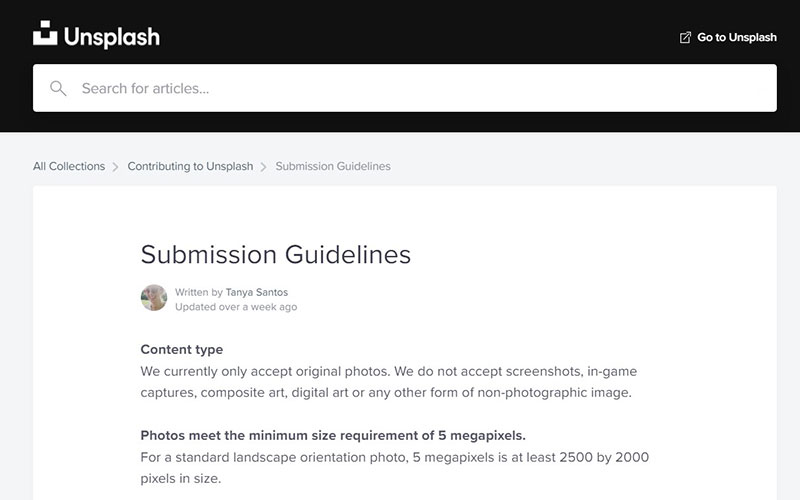
Unsplash.com is a photo repository website for beginners to promote their work and get published online. They only accept original photos. Its guidelines present specific requirements but still allow photographers to express themselves freely.
SYN
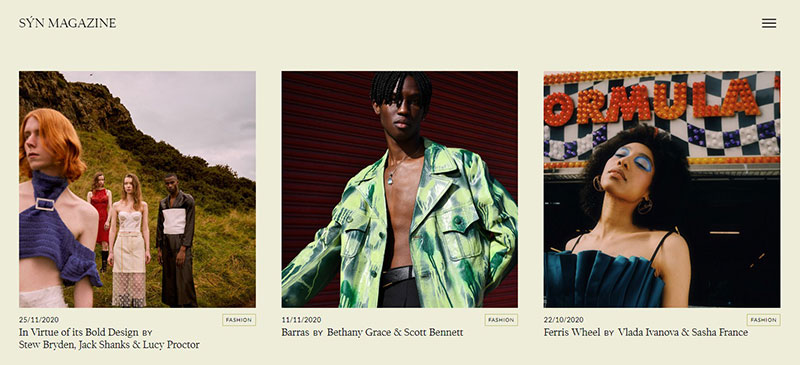
SYN Magazine is an independent magazine that publishes articles about visual arts, fashion, and beauty. It encourages all kinds of submissions.
PetaPixel
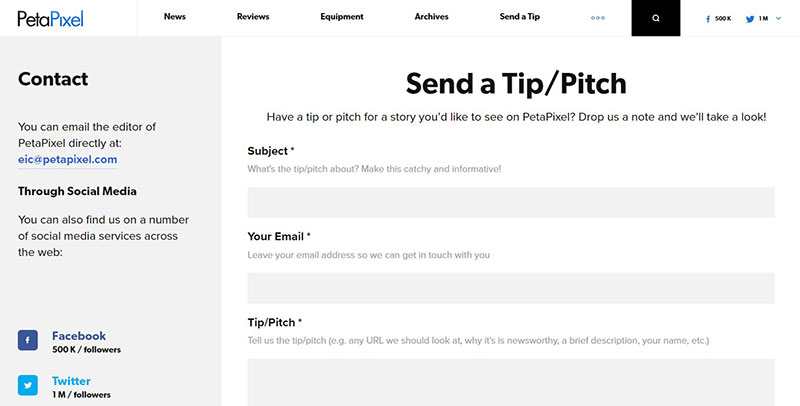
This photography magazine features articles and tips about photography. It also reviews cameras and photography equipment. Photographers can even pitch a story to this magazine.
Lucy's

This magazine focuses on hairstyles, makeup, and accessories. Its website lists future issue themes and gives a photo submission deadline for photographers. It demands exclusivity.
Landscape Photography Magazine

This magazine highlights gorgeous landscape photography from around the world. Each edition concentrates on one type of landscape. Photographers can send landscape books for review. Or they can enter into various competitions.
Outdoor Photographer

The Outdoor Photographer Magazine is a fantastic opportunity for nature and travel photographers. It looks for a variety of contributors from different backgrounds and geographic areas.
FAQs about submitting photos to magazines
1. What type of photos do magazines typically look for?
Typically, magazines seek out images that are both of a high caliber and visually appealing and that complement their brand and content. Depending on the subject and target audience of the publication, the kinds of images they are interested in can change.
For instance, fashion publications could seek out chic and cutting-edge images, while travel magazines might choose picturesque and moody images that convey a feeling of a place. Before submitting, it's crucial to examine the magazine's tone and subject matter to make sure your images suit their tastes.
2. How do I know which magazines are the best fit for my photography?
Finding the proper magazine for your work requires extensive research into other publications' niche interests.
Examine each magazine's editorial focus, themes, and general look to see whether your picture fits their tastes. Before submitting, pay close attention to their submission requirements and confirm that your photography satisfies them.
Choose publications that suit your interests and style by consulting industry experts or online photographic forums.
3. Do magazines typically require exclusive rights to the photos I submit?
Magazines may demand a variety of rights, from exclusive to non-exclusive, for the submitted photos. In contrast to non-exclusive rights, which permit you to use the same images in other publications, exclusive rights signify that the magazine has the exclusive right to use the images for a set period of time.
It's crucial to read the magazine's submission policies and contracts in order to comprehend the rights they are demanding and determine whether they coincide with your photographic objectives.
4. What should I include in my submission package besides the photos themselves?
It's crucial to send photos together with a cover letter, a succinct bio, and pertinent details regarding the uploaded photos. Introduce yourself, discuss your photographic approach, and discuss how your work fits with the magazine's interests in the cover letter.
Your accomplishments, schooling, and photography experience should be highlighted in the bio. The publication may be able to better appreciate your perspective if you include context regarding the images, such as the location, subject, and lighting circumstances.
5. What is the best way to submit photos to a magazine?
The best way to submit pictures to a magazine is to strictly adhere to its submission requirements. The majority of magazines have a specific email or online submission area for photos.
As well as include all required information in your submission package, make sure your images are in the correct file format, resolution, and size. It's a good idea to add some personality to your contribution and state why you believe your images fit the magazine's aesthetic.
6. How many photos should I submit to a magazine at one time?
The number of images that must be submitted may vary depending on the magazine. It's preferable to adhere to the magazine's submission requirements and send just the best pieces.
Too many photographs submitted could tire out the editor and weaken the impact of your portfolio. In general, starting with 5–10 of your best images is a smart idea.
7. What is the typical turnaround time for a magazine to respond to a photo submission?
A magazine's response time can range from a few weeks to several months. It depends on the editing schedule of the publication, the number of submissions, and the difficulty of the review procedure.
It's crucial to be patient and hold off on submitting to other journals until you receive a response. If a response period is specified in the magazine's submission requirements, you should wait to follow up until it has passed.
8. How should I prepare my photos for submission to a magazine?
Making sure your images adhere to the magazine's specifications for file type, size, and resolution is part of preparing them for submission.
To guarantee that the images look their best, it is crucial to select the appropriate format, such as JPEG or TIFF, and modify the color, contrast, and brightness. A descriptive file name is also recommended, and you should stay away from watermarks and other things that can distract from the image.
9. What are some common mistakes that photographers make when submitting photos to magazines?
Not adhering to the submission requirements is one of the most common errors photographers make when submitting photographs to magazines. Rejection can result from delivering improper file format or size, too many photographs, or not enough metadata.
Another error is not performing enough study on the magazine's tone and subject matter, which leads to the submission of pictures that don't suit the magazine's objectives.
Finally, if a cover letter or bio is not provided, it may be challenging for the editor to comprehend the photographer's aesthetic.
10. What rights do I retain over my photos if they are accepted and published in a magazine?
Depending on the arrangement you reach with the magazine, you may or may not maintain ownership of your images. During a set amount of time, you might not be able to use the images elsewhere if the publication demands exclusive rights to them.
You might be able to use the pictures in other publications if the magazine simply requests non-exclusive rights.
Before agreeing to have your images published, it's vital to read the contract carefully and comprehend the rights you are renouncing.
Ending thoughts on submitting photos to magazines
One final piece of advice for submitting photos to magazines is that it is not an overnight event. So do not get discouraged. Do not let one rejection derail your love of photography. Keep shooting, keep improving, and one day you will be successful.
Remember to build up a solid and well-rounded portfolio. Aim your blows by researching which publications accept photography submissions and align with your style.
It takes hard work, but in the end, it is worth it. It is really cool to see your photos published on a glossy magazine page. Once a photo is published in a magazine, thousands of people see it. This provides endless opportunities for more work.
Getting photos published in a magazine is the beginning of an exciting career. So do not give up before you succeed.
Remember, too, that getting published in a magazine is not the end goal of a photography career. During the journey, it is not worth compromising values just to get published.
Keep your good sense, respect the art of photography, and do what you love the most. Who knows, maybe your photo will be the next one thousands of people see at newsstands.
If you enjoyed reading this article on submitting photos to magazines, you should also read this one about how to prepare for a photoshoot.
We also wrote articles about similar subjects like how to get more photography clients, becoming an event photographer, how to run a successful photography business, how to become a licensed photographer, social media marketing for photographers, real estate photography contract, appointment scheduling for real estate agents, how to get your photography noticed, real estate photography marketing and photography mood board.

